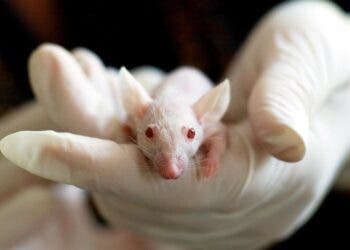
It’s estimated that some 8 million people in the United States suffer from post-traumatic stress disorder (PTSD), causing great angst, depression and poor social integration. There are numerous therapies and techniques designed to help patients recover and banish the specters that lurk in the deepest recesses of their minds, haunting them. A common psychotherapy is fighting fear with fear, by having the patient face his ordeal: basically, the patient is introduced in an environment where the trauma is re-lived. The basis is that as the patient relieves past traumatic events, this time in a controlled and safe environment, he may have a chance at overcoming it.
For many, the memories of their traumas, be them war scenes or child abuse, are so deeply entrenched that therapy fails. The older these memories are, the more difficult the therapy becomes. Now, MIT neuroscientists are proposing a novel way of accessing and re-editing traumas by erasing the old memory to replace it with a fresh, safe one. Li-Huei Tsai, director of MIT’s Picower Institute for Learning and Memory, along with colleagues, studied the effects of a drug called a HDAC2 inhibitor on mice.
Previously, scientists demonstrated that when new memories are formed the chromatin in neurons — DNA packaged with proteins — undergoes remodeling to facilitate the activation of certain genes required to create new memories. The MIT researchers wanted to see what happens in the case of the chromatin modifications that occur when previously acquired memories are extinguished. First, the researchers purposely induced a conditioned fear-response into mice by placing them in a specific environment, where a mild electrical shock was applied. Then, the researchers attempted to recondition the mice by repeatedly placing them inside the environment, this time shock free.
[RELATED] Possibility of erasing unwanted memories emerges
They found that during the first 24 hours of trauma, extensive chromatin remodeling occurred during the reconditioning. For several hours after the mice were placed back in the feared chamber, there was a dramatic increase in histone acetylation of memory-related genes, caused by inactivation of the protein HDAC2. That histone acetylation makes genes more accessible, turning on the processes needed to form new memories or overwrite old ones.
Erasing bad memories
Mice which had memories older than 30 days, however, showed no change in histone acetylation. In other words, re-exposure to trauma can work effectively by changing the primary emotional response to it, as a result of erasing the previous memory, but there’s only a short window of opportunity available.
“If you do something within this window of time, then you have the possibility of modifying the memory or forming a new trace of memory that actually instructs the animal that this is not such a dangerous place,” says Tsai. “However, the older the memory is, the harder it is to really change that memory.”
Based on these findings, the MIT scientists chose to experiment with a HDAC2 inhibitor, which can cause structural changes in the brain, essentially making it more plastic increasing the possibility that very strong new memories will override old, traumatic memories. Mice with trauma memories older than 30 days were treated with this inhibitor and subjected to the same re-conditioning technique. This time, their traumatic memories were extinguished just as easily as in the mice with 24-hour-old memories.
Moreover, the HDAC2 inhibitor treatment seems to turn on a group of genes, which in turn, eventually, activate other genes necessary for memory formation. In the hippocampus, the part of the brain where memory are stored, the number of neuron connections was found to be greater and stronger than usual.
“Our experiments really strongly argue that either the old memories are permanently being modified, or a new much more potent memory is formed that completely overwrites the old memory,” Tsai says.
“This could be a very promising way to bring older memories back, process them in the hippocampus, and then extinguish them with the correct paradigm,” says Jelena Radulovic, a professor of psychiatry and behavioral sciences at Northwestern University Feinberg School of Medicine who was not part of the research team.
There are already FDA approved drugs that contain HDAC2 inhibitors, used for cancer treatments. Tsai hopes that, considering this, a human clinical trial might commence soon to see how well an HDAC2 psychotherapy might fair. The results were reported in a paper published in the journal Cell.






